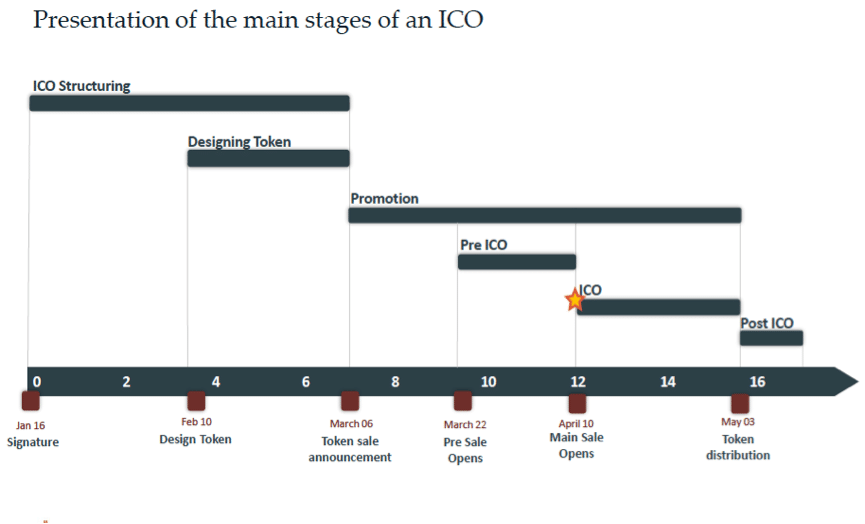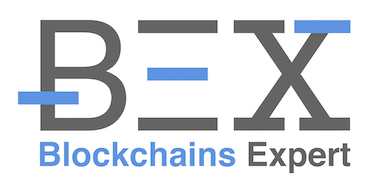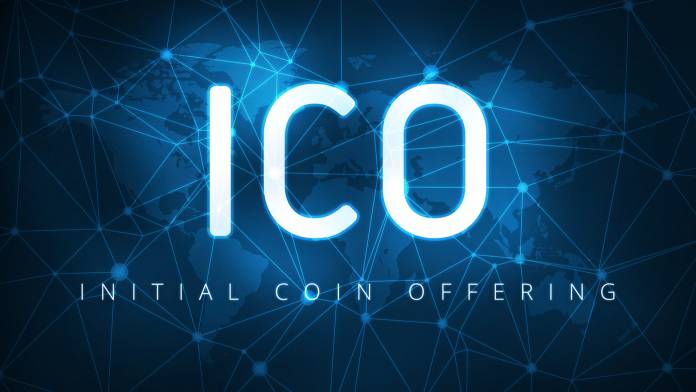Certainly one of the most famous expressions at the moment, initial Coin offering or ICO, is used by reference to the initial public offering or IPO by which companies of a certain size open their capital to the public in order to raise funds. The ICO could well revolutionize the world of finance.
Note that it is also very common to use ITO for “Initial Token Offering”, because “coins” and “tokens” are generally different. On the website Coinmarketcap.com for instance, these two categories are identifiable by selecting “Coins” or “Tokens” at the top of the list of all tokens. “Coins” correspond to what is also called “Native tokens”, which according to the definition of the website, are “crypto-currencies which can operate independently” since they rely on their own blockchain.
By contrast, “Tokens” (or “non-native tokens”) are “crypto-currencies which are dependent on another crypto-currency as a platform for work”. This is, for example, the case of Dapps which are created on top of the Ethereum protocol (Storje, augur, Iconomi, Golem, Omnisgo…). They actually benefit from the development environment and the blockchain maintained by Ethereum.
To simplify, ICO/ITO is a decentralized way to raise capital. It is a decentralized way because it allows entrepreneurs to access investors directly through decentralized platforms (Ethereum, Wave…) without having to go through the traditional Venture Capital path. We are talking about tokens/coins and not “securities” issued by traditional companies, because depending on the projects these tokens/coins may have functions and returns on investments that are very different from traditional financial instruments.
[thrive_lead_lock id=’3574′]
Method to issue tokens: there are two options to issue the tokens through an ICO. The first method is to collect the requested capital and then distribute all the tokens to the participants in proportion to their participation. This method could be compared to the Primary Market issuance we currently know.
The second method is to release the tokens on an exchange and sell them to the participants. This method could be compared to the Secondary Market.
Note that during an ICO/ITO both methods can be used, one after the other, when there is a pre-sale for instance.
ICOs are therefore a mix of IPO and crowdfunding but actually goes much further.

WHAT ARE THE DIFFERENT STEPS OF AN ICO?
In this section, we will approach ICO/ITO from the perspective of an Entrepreneur (1) and from the one of an Investor (2) since both are quite different.
I – THE ENTREPRENEUR VIEW
I had the chance to assist to a presentation by Hubert de Vauplane and Valentine Baudoin from Kramer Levin, the leading law firm for ICO in Paris, and they explained all the different steps of an ICO. Given the law firm’s experience in IPO, it was extremely interesting to better understand the difference between both processes.
One of their first points was that ICO/ITO process was similar to IPO in many instances, starting from the necessity to contract with specialists (advisors, lawyers, lending banks…) in order to complete the project. Hiring such contractors requires entrepreneurs to gather an important amount of funds upfront (around $500,000).
That’s why many entrepreneurs decide to finance the ICO through a pre-ICO where they raise funds by distributing tokens to early adopters. The funds raised will then pay for the advisor, lawyers, banks and all costs of the real ICO.
So the idea that anybody can organize a serious ICO just by paying contractors with ICO tokens is not conformed to reality. ICO relying on a serious project would normally go through the following steps:

We will go into details for each of these points in the third part of this article series, but for the time being, it is interesting to get an idea of the different steps:
1 – First stage: the ICO structuring
This part is conducted in parallel to the issuance or the mining of the tokens that will be sold.
- Signature of a service agreement/mandate agreement with an arranger (also called « Global Advisor »).
- Signature of an engagement letter with a law firm.
2 – Second stage: Product wrapping
During this part, the team focuses on the preparation of the product, by setting up a website and finalizing the Whitepaper. Most importantly they will try to motivate the community if they already have one. If not, they will need to use marketing tools, such as bounty programs and airdrops as well as the traditional method to build a community in a short period of time. It is important to mention that going through an ICO is an excellent way to start developing a community.
3 – Third stage: Pre-sale and sale
As we already mentioned, a pre-sale can be organized to raise funds from early adopters in order to pay for the ICO/ITO process. The pre-sale is generally proposed at a discount price in comparison to the ICO/ITO price that will be proposed during the sale.
4 – Fourth stage: Post ICO/ITO and Listing
Listing the Coins/Tokens on an exchange is vital to the success of the ICO/ITO. To get a Coin/Token on a well-known exchange will almost certainly ensure a higher price and an exposure to a wild range of investors.
However, this is a challenge and most exchanges have released the criteria they evaluate when considering whether to list digital currencies. The framework lists considerations such as whether the digital currency would qualify as a security under Coinbase guidelines, how much liquidity it has, and what exchanges trade the currency already.
II – THE INVESTOR VIEW
A majority of ICO are created over the Ethereum blockchain. In practice, a smart contract is created and stored on the blockchain to manage all the ICO process: reception of tokens, payment when the funding trigger is reached or refund when the trigger is not reached. Setting-up this kind of smart contract is quite straightforward since the code is available on the Ethereum website.
If you want to take part in an ICO and are starting from scratch, you will need to go through the following steps.
1- Buy Ether or Bitcoin on an Exchange:
You will not be able to take part in an ICO with fiat currencies, so the first step is to obtain cryptocurrencies. Most of the ICO are conducted with bitcoins and ether (the Ethereum native token). As we described in this article, there are several ways to obtain cryptocurrencies, but the most common is through an exchange.
2- Set-up a local wallet:
As we explain in this article, when your cryptocurrencies are stored on an exchange you do not own your private keys. In other words, you have no control over your coins.

Each ICO utilizes its own set of rules but most of the time you would be required to send the private keys of a given coin (generally BTC or ETH) to the wallet created for the purpose of the ICO. The only way to effectively detain and transfer your private keys would be from your local portfolio.
You should never transfer your coins directly to the wallet of the ICO from an exchange because you do not detain the private keys and the ICO tokens you have purchased will not be sent to your attention.
Which wallet should you choose? Obviously, a wallet that is compatible with the ICO tokens you are looking for. Today, most ICO tokens are ERC20 compatible (i.e these tokens are compatible with the Ethereum protocol), so you would need a wallet that is able to accept this type of tokens. The most commons ones are MyEtherWallet, Metamask or Parity. It is important to bear in mind that these wallets do not provide the highest level of security and all your tokens should remain in cold storage.
3- Receiving your coins:
All ICO has a different process so you have to go on their website and follow their instruction, but most of the times, you will be asked to send Ether to a given address and receive your tokens once the ICO is completed.
Note that this is quite common to have to wait one or two days before you receive your coins.
In the next article of our series on ICO/ITO we will describe how you can analyze an ICO/ITO in detail.
WHERE TO SEARCH FOR ICO:
If you want to take part in an ICO, you can visit the following websites which list the coming ICOs :
https://www.coindesk.com/ico-tracker/
https://cointelegraph.com/ico-calendar
I hope you enjoyed this article! If so, please do not hesitate to like it and share!!
[/thrive_lead_lock]
Follow me on Social media


![Ledger Nano S review – The Safe of the futur [2020] Ledger Nano S avis](https://www.blockchains-expert.com/wp-content/uploads/2019/10/Ledger-218x150.jpg)

![Binance review: all you need to know [2020] binance review](https://www.blockchains-expert.com/wp-content/uploads/2019/09/binance-218x150.jpg)













![Kraken review: all you need to know [updated 2020]](https://www.blockchains-expert.com/wp-content/uploads/2020/01/kraken-review-2019-4-780x405-100x70.png)
![Ledger Nano S review – The Safe of the futur [2020] Ledger Nano S avis](https://www.blockchains-expert.com/wp-content/uploads/2019/10/Ledger-100x70.jpg)

![Binance review: all you need to know [2020] binance review](https://www.blockchains-expert.com/wp-content/uploads/2019/09/binance-100x70.jpg)


![local bitcoins review – Read this before using [Full Guide 2020] LocalBitcoin avis](https://www.blockchains-expert.com/wp-content/uploads/2019/05/LocalBitcoins-100x70.jpg)
![Bitcoin Value in Dollar – how to analyze and predict it? [Ultimate guide 2020] Bitcoin gold](https://www.blockchains-expert.com/wp-content/uploads/2019/03/Bitcoin-gold-100x70.jpg)





